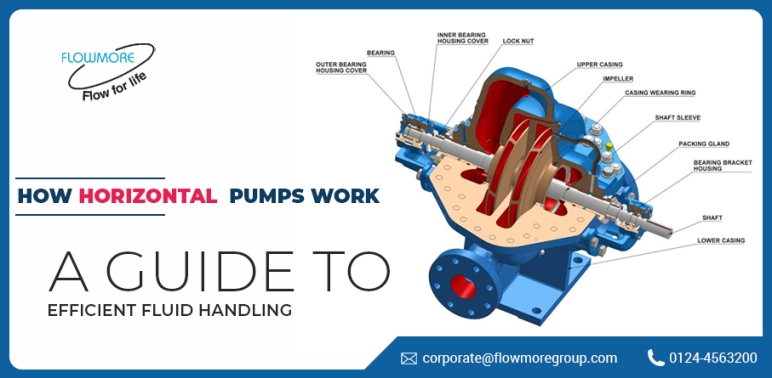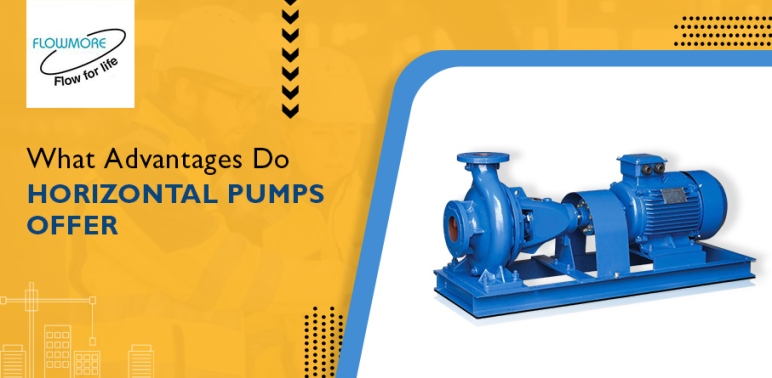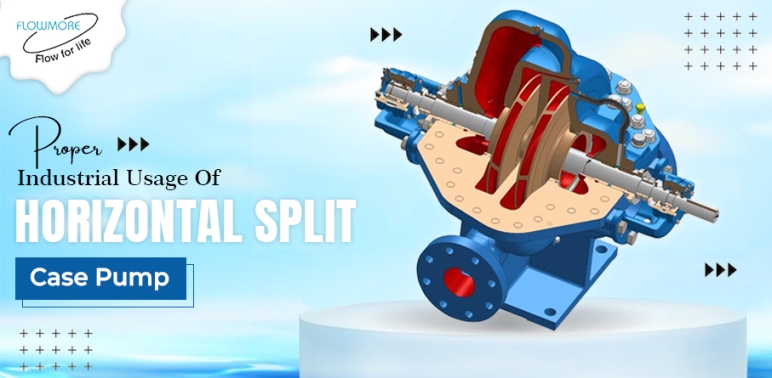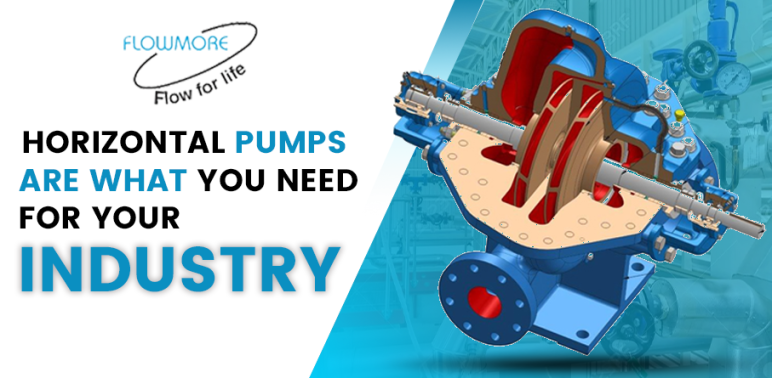A horizontal pump’s pump head is normally situated parallel to the motor’s rotational axis on a horizontal plane. They can be mounted on either a baseplate or a footplate, depending on the type of coupling. They are not constrained in any kind by being connected. The capacity of horizontal pump systems can be changed to accommodate various projects. Less downtime and maintenance expenses result from the ease with which you can upgrade or swap out the required components with widely available ones.
Apart from maintaining a consistent water supply and drainage system, Flowmore horizontal pumps are extensively employed to enhance the productivity of industrial operations. They serve a variety of industries with their trustworthy and efficient fluid transfer and circulation solutions.
Constructing and constructing the horizontal pump base
Similar to horizontal pumps, centrifugal pumps normally require the following parts:
Shaft and pump:
The pump shaft serves as the primary axis, connecting the motor and the impeller. The motor turns the impeller around the pump shaft.
Casing
The hermetically sealed housing holds the impeller and the liquid. The liquid is sucked into the housing, compressed, and then released through the opening as the impeller rotates.
Impeller:
A set of blades or propellers make up the impeller of the device. It is attached to the pump shaft. They contribute to the creation of centrifugal force when they spin. It causes the liquid to flow.
The Fundamentals of Horizontal Pumps: Their Operation and Dependencies
Most of the horizontal pumps are centrifugal pumps. These pumps work on the basic principle of moving liquid. It works from a low-pressure to a high-pressure area. It is been done by the centrifugal force. It is generated by the impeller’s rotation.
Centrifugal horizontal pumps operation is as follows:
Process of Inhalation
The pump shaft spins the impeller. It happens as the liquid is drawn into the pump’s intake. The steps that represent inhaling are seen here. Centrifugal force accelerates the liquid. It creates a low-pressure zone. It is produced by the impeller’s rotation. The liquid is attracted into the pump. This is the result of the creation of an attractive force.
Push procedure
A push procedure occurs when the liquid is shoved out of the pump. The liquid can flow out of the pump’s output. It can be carried to its destination. This is because of the acceleration and pressure. This is produced by the impeller’s revolution.
Other varieties of Horizontal Splits Pumps are also there. It includes progressive cavity and diaphragm pumps. Centrifugal pumps are significantly more prevalent. It is prevalent than these other types of pumps.
Advantages of Usage of horizontal pumps over other pumps:
Easy installation and maintenance
Because of its horizontal shape, Flowmore horizontal pumps are easy to install and maintain. Additionally, horizontal pump maintenance is less difficult. The pump’s primary component is easily accessible and serviced due to its ground-level location. This means that disassembling the pipes or removing the pump body is not required for maintenance.
Well-organized
A horizontal pump from the Horizontal Pumps Manufacturer India that works well will have pump shafts and impellers arranged to transfer mechanical energy as much as possible. Their strengths lie in higher flow rates and pressures, which enable them to satisfy the needs of a wide range of sectors.
Distinct environment applicability
Horizontal pumps are helpful in these types of environments because they can operate in certain conditions. For instance, Horizontal Pumps India are resilient to the extreme conditions seen in industrial environments, such as high pressures, temperatures, and abrasive material. They are able to maintain their extended lifespan and dependability as a result.
A brief overview
Because they are dependable and effective, horizontal pumps from the reputed Horizontal Pumps Manufacturer like Flowmore Limited are widely utilized in industrial, drainage, and water supply applications. It will be easier for us to appreciate the importance and worth of horizontal pumps if you have a solid understanding of their operation, advantages, and various applications.












